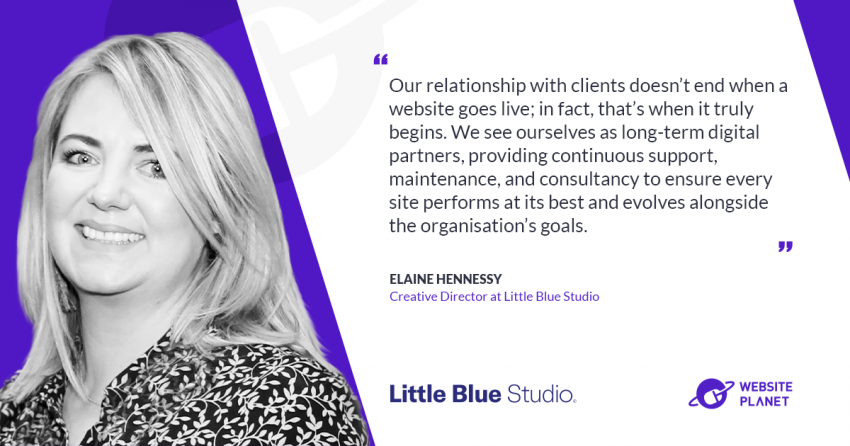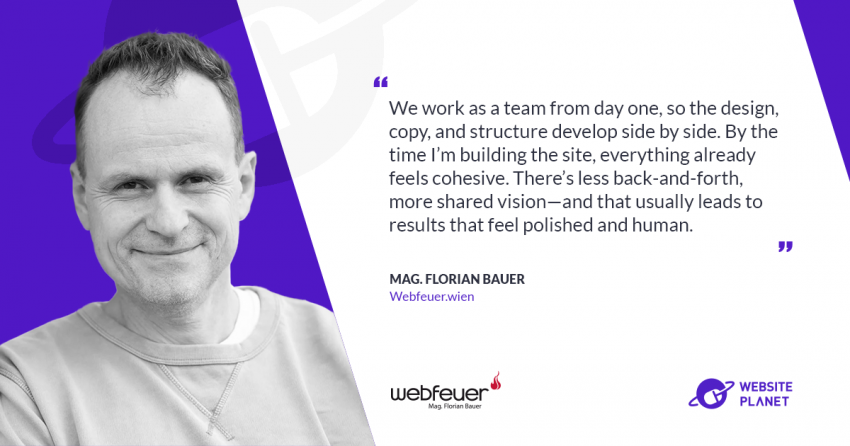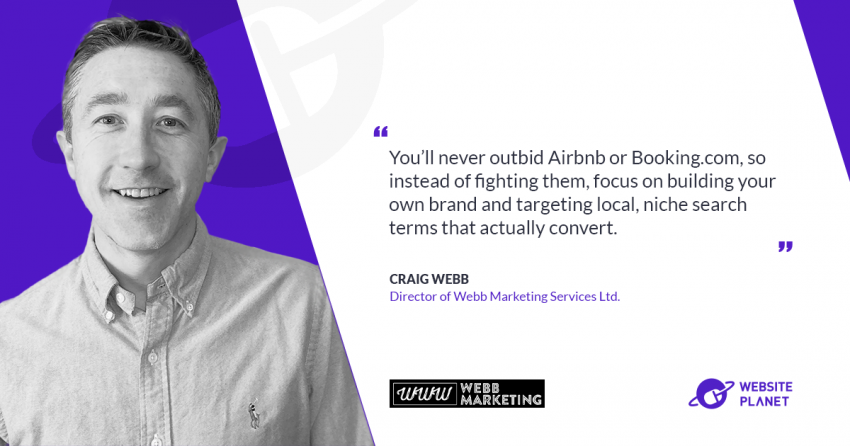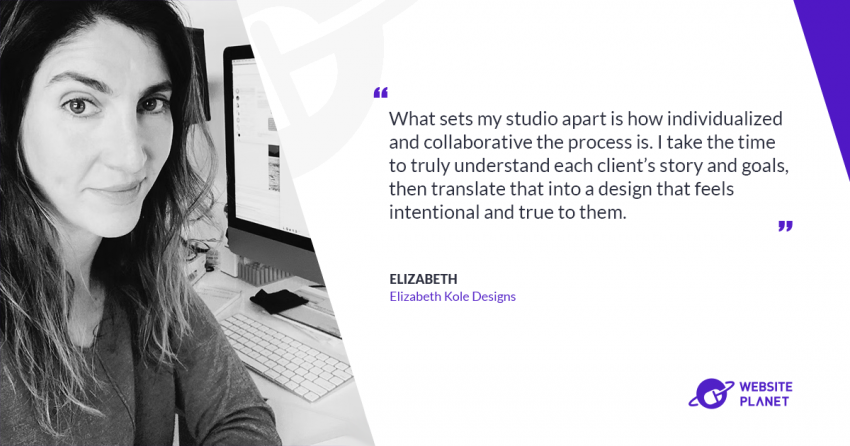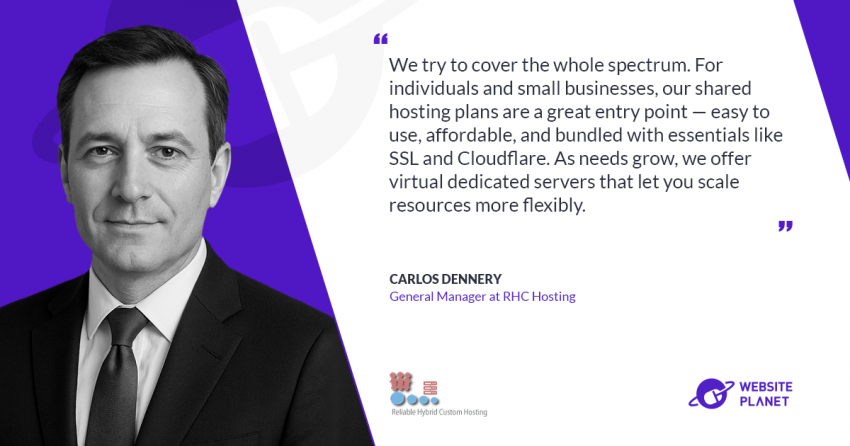Sprocket Rocket is redefining how websites are built on HubSpot by combining modular design with strategic automation to streamline the entire process. In our conversation with founder Kevin Barber, we explore how the platform evolved from a traditional agency workflow into a powerful system used by top agencies and brands to build high-performing, scalable websites—fast. Learn more in Kevin’s exclusive Website Planet interview below.
Can you give us some insight into Sprocket Rocket’s backstory and its journey to where the company is now?
We’re a website design and development agency that specializes in HubSpot. And what we’ve learned over time is that every client wants a custom website—no one wants generic websites.
But after building hundreds of sites, we started to notice a pattern. Even though clients ask for something custom, most websites actually follow the same basic structure. There are only so many styles of navigation that make sense and are easy for users to understand. Same with page headers—specifically the masthead area above the fold. There aren’t dozens of intuitive masthead styles; there are just a few that really work. Below that, there’s usually a credibility section, followed by an instant value section sometimes, a services overview in two or three columns, a testimonial section, another service offering, maybe a lead magnet, etc. What we realized is that these so-called “custom” sites were really just different combinations of the same core components.
That led us to a big question: instead of building every site from scratch and reinventing the wheel every time, why not create a solid set of patterns—reusable building blocks based on what consistently works—and then customize those? We’d been playing around with that idea for a while, but it didn’t quite come together until we heard Gary Vaynerchuk speak at Inbound. He said something that stuck with us: “If you’re not working on a business model that puts your current business out of business, someone else is.” And that really made us rethink our approach.
We realized that while we were trying to improve our process, it was still vulnerable. Someone else could easily come in with a more efficient system and outperform us. So we decided to fully commit to this idea: build a library of the most effective modules, pull in the best patterns from top-performing websites, and focus our design time on customizing those for each client—instead of creating everything from the ground up.
That shift changed everything. By leaning into proven modules, executing them at a high level, and then focusing more time and effort into the finishing touches, we ended up with a better product. The websites performed better, we had fewer issues, our margins improved, and most importantly—clients were happier. Sprocket Rocket made it easy for them to manage and update their own sites, without needing a developer for every small change. They felt ownership over their websites, which was a huge win.
At first, we were hesitant to offer this to other agencies. We assumed they’d want too many custom features or wouldn’t want to do the hands-on work required. But when a few agencies really pushed to use what we’d built, we gave it a shot—and we were totally wrong in the best way. These agencies already knew how to build great websites. They just needed the right system. They became some of our best users. Now, we’ve got dozens of other agencies, HubSpot Solution Partners and others, using our tools the same way we do. And that’s really how this whole thing came together.
What makes creating and working with HubSpot websites different from building other types of websites?
Here’s the thing – we used to be a WordPress shop. I personally worked with WordPress for about 10 years. And look, there are plenty of solid platforms out there. WordPress is obviously one of them. Webflow is another leading one. There are a number of good tools available today. But what sets HubSpot apart, and why we eventually chose to specialize in it, is that it’s still the only platform that truly brings everything together in one place. If you’re trying to unify your sales and marketing, manage your website content, run campaigns, drive traffic, capture leads, track contacts, and analyze performance—all from a single platform—HubSpot leads the way.
You’ve got your content, contacts, campaigns, and analytics all in one system. That’s powerful. It allows you to launch a website, track what’s working, and then automatically trigger the right actions—like notifying sales teams about hot leads, repeat visitors, or hand-raisers—all from one source of truth. No need to log into 10 or 15 different tools to stitch everything together.
Is it technically possible to do all of this using multiple tools? Sure. But the reality is, it’s such a hassle that most companies don’t do it. And as a result, a lot of low-hanging fruit gets left behind. What we started to notice was that our clients who were already using HubSpot—and doing the right sales and marketing motions within it—were getting significantly better returns on their marketing investments than those on WordPress or Webflow. That was the turning point for us. We decided to go all in and specialize in HubSpot because it was delivering better results for our clients, plain and simple.
What is the process of creating a website in Sprocket Rocket like?
When you use the paid version of Sprocket Rocket, there are a few core features that really make the process smooth and efficient.
First, instead of starting from scratch, you get access to an app that lets you pull in proven page templates—like homepages, product pages, service pages, team pages, case studies, landing pages, thank-you pages, and more. With just one click, you can push any of these pre-built pages directly into HubSpot. In addition to full pages, you can also drag and drop individual pre-built modules onto a page, whether you’re building from one of our templates or starting with a blank canvas. You can add, remove, or rearrange modules to suit your needs, and again, push the finished page into HubSpot with a single click.
Once your page is in HubSpot, it automatically adopts any brand styles you’ve already set up. That means you don’t have to manually configure fonts, colors, buttons, or spacing for every new page. The modules adapt instantly to your branding, saving a ton of time. One of the biggest advantages here is consistency. A lot of people building directly in HubSpot end up dragging in every individual element—forms, buttons, spacers, etc.—manually. That makes it hard to keep spacing and styling consistent across pages, especially when switching between desktop and mobile views.
Sprocket Rocket solves that by giving you modules that are already pre-styled and responsive. Any decisions you make about spacing, colors, or layout are automatically applied across your entire site. Whether you’re building from a pre-made page, creating something custom, or cloning an existing layout for a new purpose, your site stays clean, cohesive, and on-brand. If you’re a designer, you can go even further. We give you access to our core Figma files, which can be easily adapted to your brand and exported for use in HubSpot. With just a little development work, you can take things as custom as you want. So even though you’re starting with a framework, it doesn’t mean you’re locked into a cookie-cutter design.
In fact, some of our most premium websites—$100,000 to $200,000 builds—have been created on top of Sprocket Rocket. They’re fully custom at the highest level, but because they’re built on a flexible, maintainable codebase, clients can manage and update them without touching code. No more getting stuck in that all-too-common “I don’t know how to change this” situation that often comes with traditional custom websites.
What different solutions do you offer, and what are the differences between them?
Sprocket Rocket starts with a free version. Now, we don’t really expect anyone to build an entire website on the free version—it only includes about half a dozen modules. But it’s a great way to get a test drive, especially for early-stage startups or small businesses who are still trying to figure out product-market or message-market fit. At that stage, you don’t need hundreds of modules—you just need the basics to get moving.
From there, we offer Sprocket Rocket Core, which includes 50 modules and costs just under $200. It’s actually priced significantly lower than many competing website themes—sometimes half or even one-fifth the price. Despite that, it’s one of the top five products in the entire HubSpot Marketplace. Honestly, the price almost doesn’t reflect the value—it’s that powerful. We’ve built premium websites using just the modules from Core. It’s ideal for brands that need a simple, solid site that performs well without all the bells and whistles.
On the other end of the spectrum, there’s Sprocket Rocket Pro—a $3,000 package. It includes everything we’ve built: over 150 advanced modules like calculators, advanced blog layouts, premium nav and footer options, and all the top-tier components we’ve developed over the years. It also comes with all of our proven page templates and free brand setup, which takes care of some of the technical onboarding that can be tricky for users new to HubSpot.
The way we like to describe it is: imagine Core as a basic Lego set. You can build great stuff with it. But Pro is like a massive Lego Technic set—you can build far more complex, high-performing machines. Is one better than the other? Not necessarily. Sometimes, simplicity scales better. Sprocket Rocket Core is perfect when you just need a clean, simple site. Pro is for advanced, custom builds—and that’s what nearly all of our agency partners use when building custom websites for their clients.
Now, we’ve had a pretty wide pricing jump between the two, from $200 to $3,000. But in about 40 days, we’re launching a new product that fills the gap between Core and Pro. It’s called Sprocket Rocket Stack, and it’s priced at $997. We’ve been asked for this middle option for a couple of years now, and we’re excited to finally release it.
Stack will include some of the best and most essential features from Pro. It’s perfect for brands that are a bit more sales- and performance-driven. Maybe they’re running marketing campaigns, generating leads, and want a sharp, high-performing site—but don’t need every advanced module in the Pro library.
So, to summarize:
● Free – For testing and super early-stage users.
● Core ($199) – Ideal for small businesses and simple, streamlined sites.
● Stack ($997, launching soon) – Great for sales-focused brands who want more customization and functionality without the full Pro package.
● Pro ($3,000) – Best for agencies, marketers, and brands that need full flexibility, advanced features, and scalability.
Each version is built for a different type of user and stage of growth—but all of them are designed to help people build high-quality HubSpot websites quickly and easily.
What can we expect from the company going forward? Any upcoming project we could be looking forward to?
Yes, we’ve got a few exciting things in the pipeline.
First, we’re launching Sprocket Rocket Stack in about 40 days. It’s a new mid-tier product that sits between Core and Pro, combining some of the most popular Pro features in a more accessible package. As mentioned before, it’s ideal for brands that want more flexibility than Core but don’t need the full Pro suite. Not long after that—within about 30 days—we’ll also be rolling out a refreshed version of Sprocket Rocket Core. It’ll have an updated look and feel, and an overall better user experience.
Beyond that, we’re working on solving one of the biggest pain points in web design: writing the actual copy. That’s where our new product, Copy Rocket, comes in. Copy Rocket helps users generate page copy using guided AI prompts and interviews. We’ve already been testing this internally through our other company, Lean Labs, by feeding in real client interviews and turning them into usable copy drafts. It won’t give you a final version, but it gets you 80–90% of the way there—a strong draft that can be polished into finished content in 15–30 minutes.
This is perfect for users who struggle with what to say on their pages. Instead of staring at a blank screen, they get a solid starting point based on best practices and real input.
So to sum it up:
● Sprocket Rocket Stack launches soon – a new mid-tier plan
● Sprocket Rocket Core is getting a redesign
● Copy Rocket is on the way – helping users quickly generate great page copy using AI
We’re really focused on making it easier for anyone to build and launch high-performing websites—without all the usual friction.
Is there anything else about your work that you’d like to share that we haven’t covered?
Yes — as HubSpot rolls out new AI and extensibility features at Inbound this year, we’re planning to fully leverage those advancements within Sprocket Rocket. We have a call scheduled soon with HubSpot’s head of AI to explore deeper integration opportunities. While we’re not ready to announce specific features yet, we’re very excited about what’s coming. This fall, we expect to roll out some innovative AI-driven updates that will enhance Sprocket Rocket even further, keeping us well positioned to adopt the best new HubSpot capabilities as they evolve.
To learn more about Sprocket Rocket, you can visit www.sprocketrocket.co



